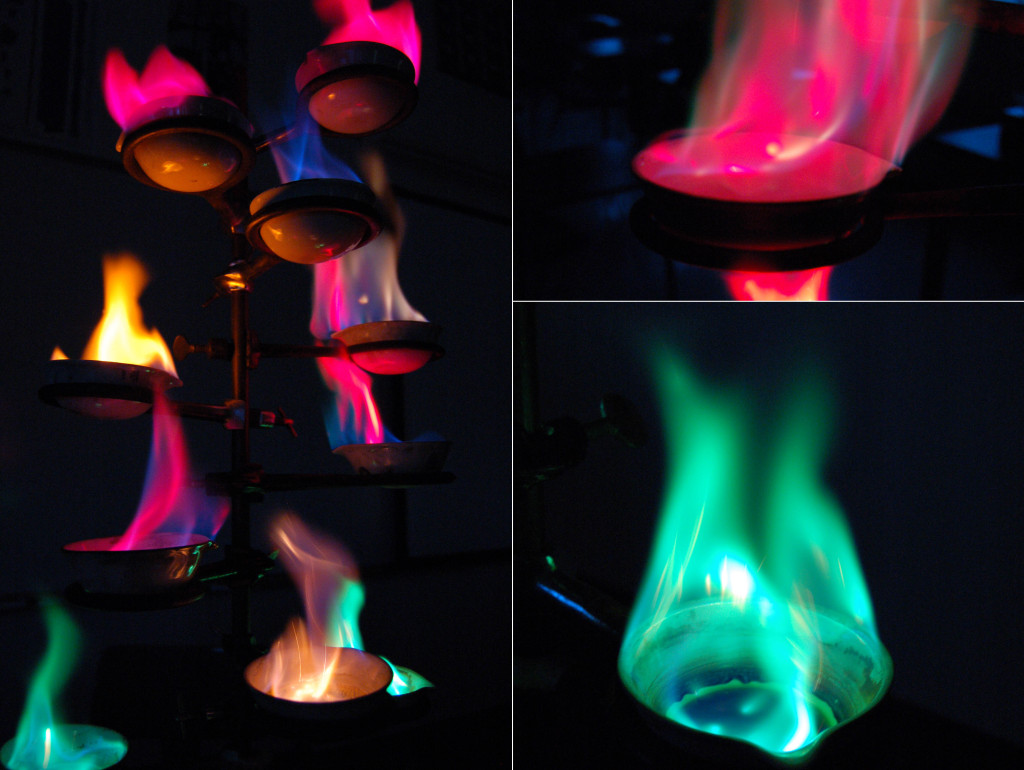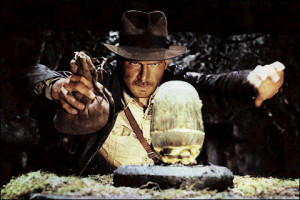You are currently browsing articles tagged chemistry.
Here is a compilation of demonstrations I do for “Combustion Day”, which capitulates three days of demonstrations to identify the five main types of chemical reactions. DO NOT TRY THESE AT HOME.
Combustion Day 2010 from Brian Bartel on Vimeo.
Tags: chemistry, combustion, Experiments, Science Education
Using video clips in the classroom is nothing new – a couple companies have even made a business model for this educational niche. But Hollywood movies can also have educational value, especially when trying to find errors and discrepancies within them. To assess some basic properties in matter in my chemistry class, I have been utilizing movie clips for help.
When teaching density, I use a clip from Indiana Jones: Raiders of the Lost Ark [You Tube Clip] whereby Indiana tries to swap a gold idol with an equivalent VOLUME of sand. Obviously, Indiana gets the mass wrong, as sand and gold have quite different densities. A similar exercise can be found at Glencoe Science.
I’m Melting?
Moving on to chemical versus physical change, I get a little help from the Wicked Witch of the West in the Wizard of Oz [You Tube Clip]. In the movie, the witch clearly claims that she is melting. Using clear evidence in the film, I ask the students to defend if she is really melting, or if she is chemically reacting, sublimating or vaporizing.
Others
Of course, movie clips can be used in many other areas of science (see below) and in other disciplines. Imagine having students compare inconsistencies in the Hollywood version of a classic novel to its literary original. How do you use movie clips in class?
Tags: chemistry, Classroom Activities, For the Classroom, movies, quiz, Science Education, Videos
Inspired by Dale Basler’s stop-motion video project in physics, I recently had my freshman biophys students make videos that examine the factors affecting the rate of a chemical reaction.
We used a lab from an Addison-Wesley Chemistry lab manual entitled “Factors Affecting Reaction Rates”. This lab was ideal, as the instructions are already neatly divided into 4 parts, whereby each part examines what can affect the rate of a chemical reaction (temperature, concentration, surface area and use of catalyst). Students were divided into 8 groups of 3 (2 groups for each concept).
These were the guidelines for the videos:
- 1-2 minutes in length
- Describe setup & document experiment
- Discuss results (with graph or data table)
- Show balanced reaction
- Discuss concept
This was a 5-day project (2 days in lab, 1 for taping, and 2 for editing in the computer lab). I gave the students just the basics in order to use Windows MovieMaker, and helped them on-the-fly with questions.
Besides the final project, perhaps the best part of the project was viewing them all in class. Not only were we able to discuss the concept in each video, but students also critiqued each video in content and in quality. This evolved into a really productive discussion on how important it is to be able to communicate science effectively.
This turned out to be a great project that the students really enjoyed. The only negative comment I heard was “the reactions were kinda boring” (all kids want fire and flames). Now that I know the students can handle this type of work, my mind is spinning on what movies they can make in the future using other science tools – graphical analysis, digital microscopy and RasMol (molecular visualization software) come to mind immediately.
Here is an example video:
Tags: chemistry, Science Communication, student projects, Videos



Recent Comments